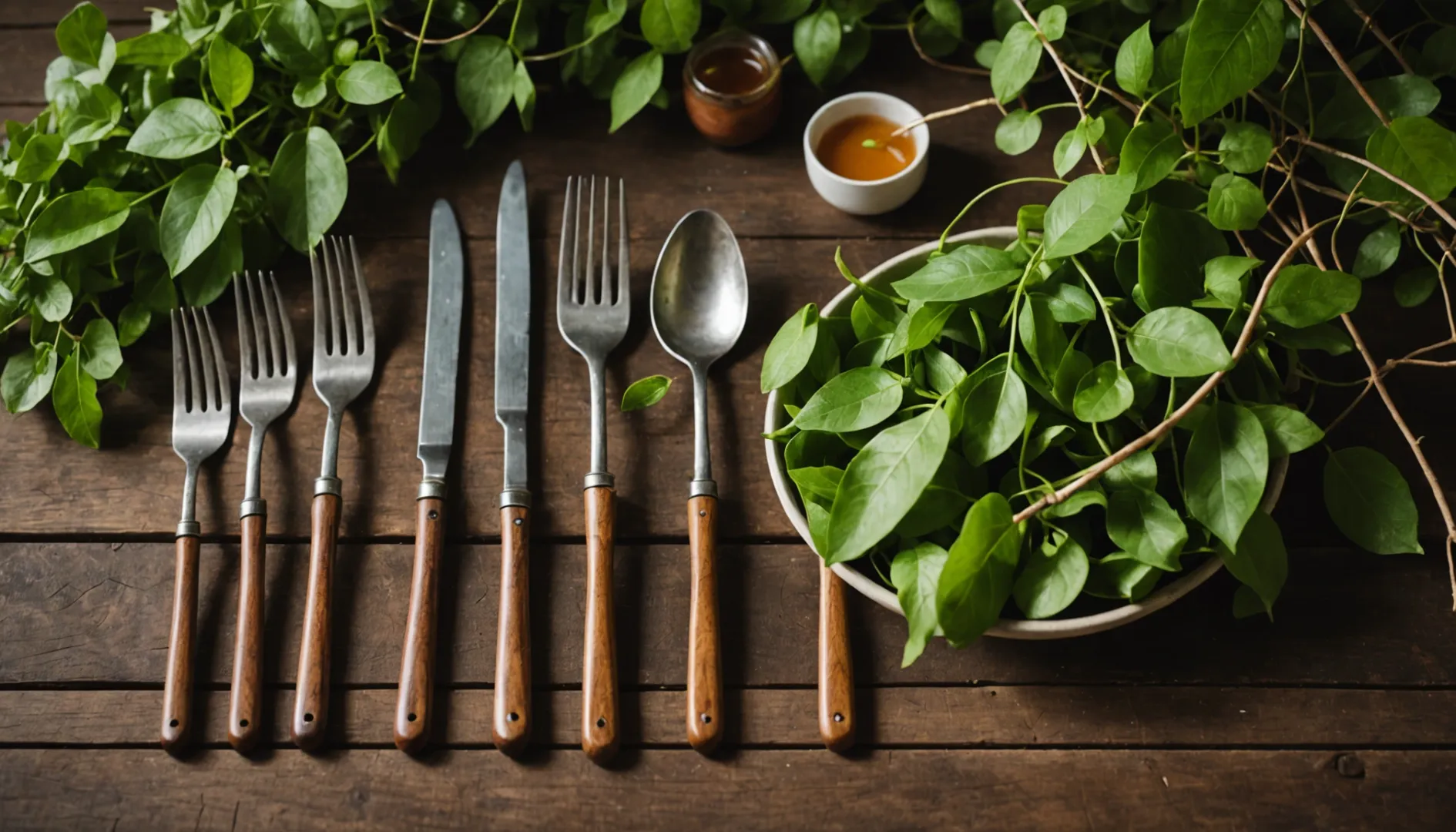
In my search for sustainable living, wooden cutlery caught my eye as an alternative to plastic. But how green is it really?
Not all disposable wooden cutlery is equally biodegradable. The type of wood, any added coatings or materials, and how it's disposed of can all affect its biodegradability. It's important to check for certifications to ensure these products are truly eco-friendly.
It's heartening to see more folks, like myself, leaning towards eco-friendly dining solutions. Yet, it's crucial to understand the ins and outs of how wooden cutlery breaks down. Let's dive deeper into what influences their decomposition. From the type of wood used to the conditions needed for proper composting, knowing these details helps us choose products that align with our environmental values. Whether it’s a backyard barbecue or a big family gathering, making informed decisions about the cutlery we use can make a big difference.
All wooden cutlery is compostable in home bins.False
Not all wooden cutlery decomposes easily at home; some need commercial composting.
Bamboo cutlery degrades faster than birch.True
Bamboo generally biodegrades more quickly due to its fibrous structure.
What Types of Wood Are Used in Wooden Cutlery?
Ever wondered what makes wooden cutlery not just eco-friendly but also charmingly unique?
Wooden cutlery often features birch, bamboo, and maple. Birch and bamboo are chosen for their resilience and eco-friendliness, while maple is loved for its elegant finish and sturdiness. Each wood type brings its own strengths, offering varied benefits for sustainable dining.
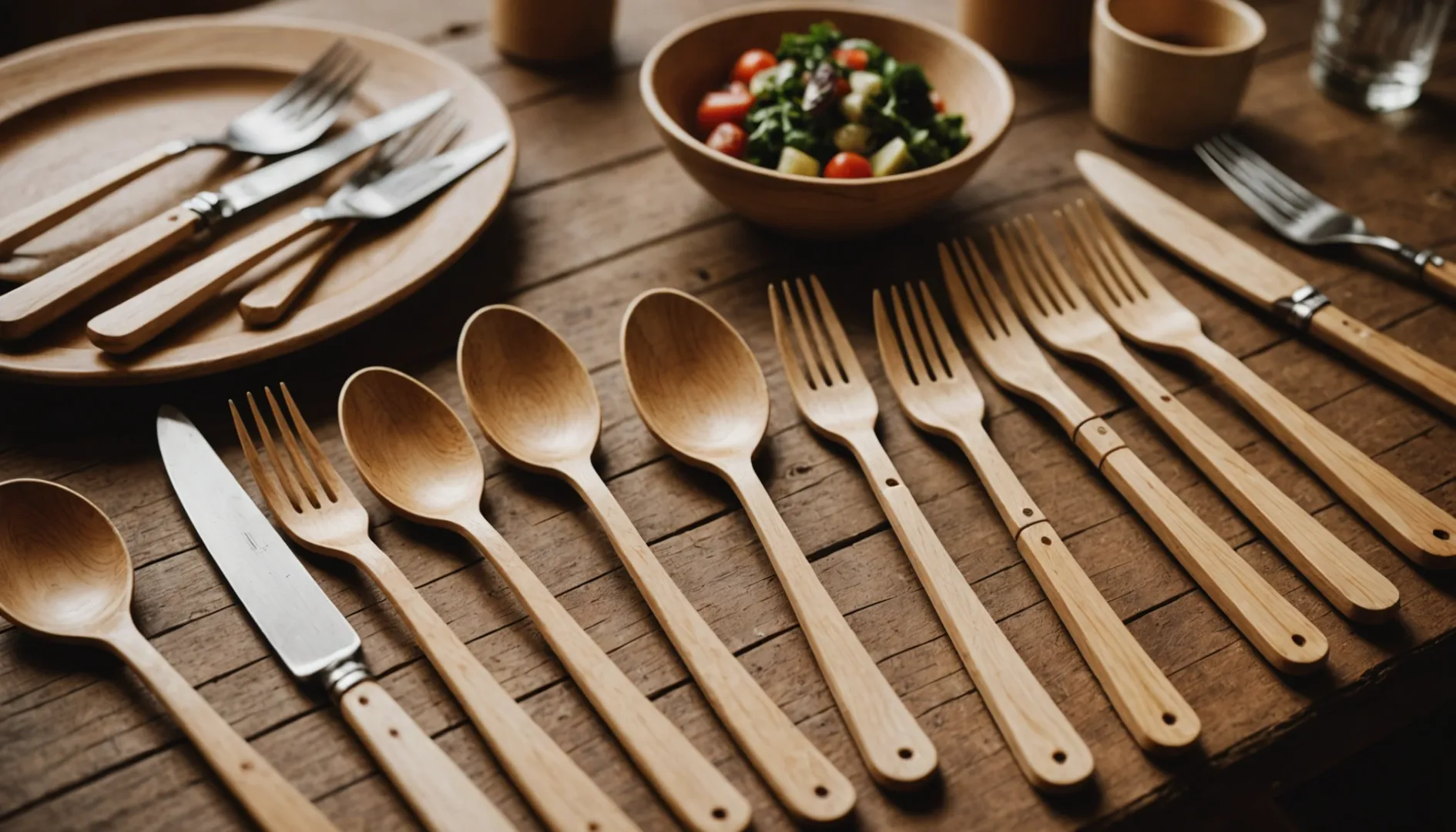
Birch: The Traditional Choice
Birch, to me, feels like that reliable friend who's always there when you need them. It's one of the most popular choices for wooden cutlery, and I can see why—its light color and fine grain give it a smooth finish that's just delightful to hold. Not to mention, it's pretty easy on the wallet and widely available. Birch is known for its strength and flexibility1, making it perfect for utensils that can handle the rigors of everyday use. Plus, it's fully biodegradable, meaning it breaks down quickly when composted.
Bamboo: A Sustainable Alternative
Bamboo has always fascinated me—it's like the superhero of plants! It grows at an astonishing rate without needing fertilizers or pesticides. Its natural antibacterial properties make it a hygienic choice for cutlery, which is a big plus in my book. Bamboo is tough and heat-resistant, great for those piping hot meals I love. And while its biodegradability is similar to birch, certain processing methods2 can influence how fast it breaks down.
Maple: For Durability and Aesthetics
Maple, oh maple—there's something about its rich, dense texture that screams sophistication. It's a hardwood, which means it's super durable and less likely to crack or splinter compared to its softer counterparts. This makes it a great choice for high-end cutlery sets. I've noticed that while maple may not decompose as swiftly as birch or bamboo, with proper disposal methods3, its environmental impact can still be minimized.
Exploring Other Options
Beyond the big three, there's a whole world of wooden cutlery waiting to be explored! Woods like cherry and walnut are occasionally used for specialty items, offering unique colors and textures that cater to niche markets seeking that artisanal touch. Knowing the properties of each wood type4 helps me choose the best material based on what I value most—durability, appearance, or environmental impact.
Bamboo cutlery biodegrades faster than birch.False
Biodegradation rates depend on treatment and disposal conditions, not just wood type.
Home composting decomposes wooden cutlery in 45 days.True
Under optimal conditions, wooden cutlery can decompose in about 45 days at home.
How Do Coatings and Additives Affect Biodegradability?
I remember the first time I realized how much our daily choices impact the environment, and since then, I've been on a mission to understand every detail, including how coatings and additives affect biodegradability.
Yes, coatings and additives can significantly affect the biodegradability of materials. Coatings may create a barrier that slows down decomposition, while certain additives might either enhance or inhibit microbial breakdown depending on their composition.
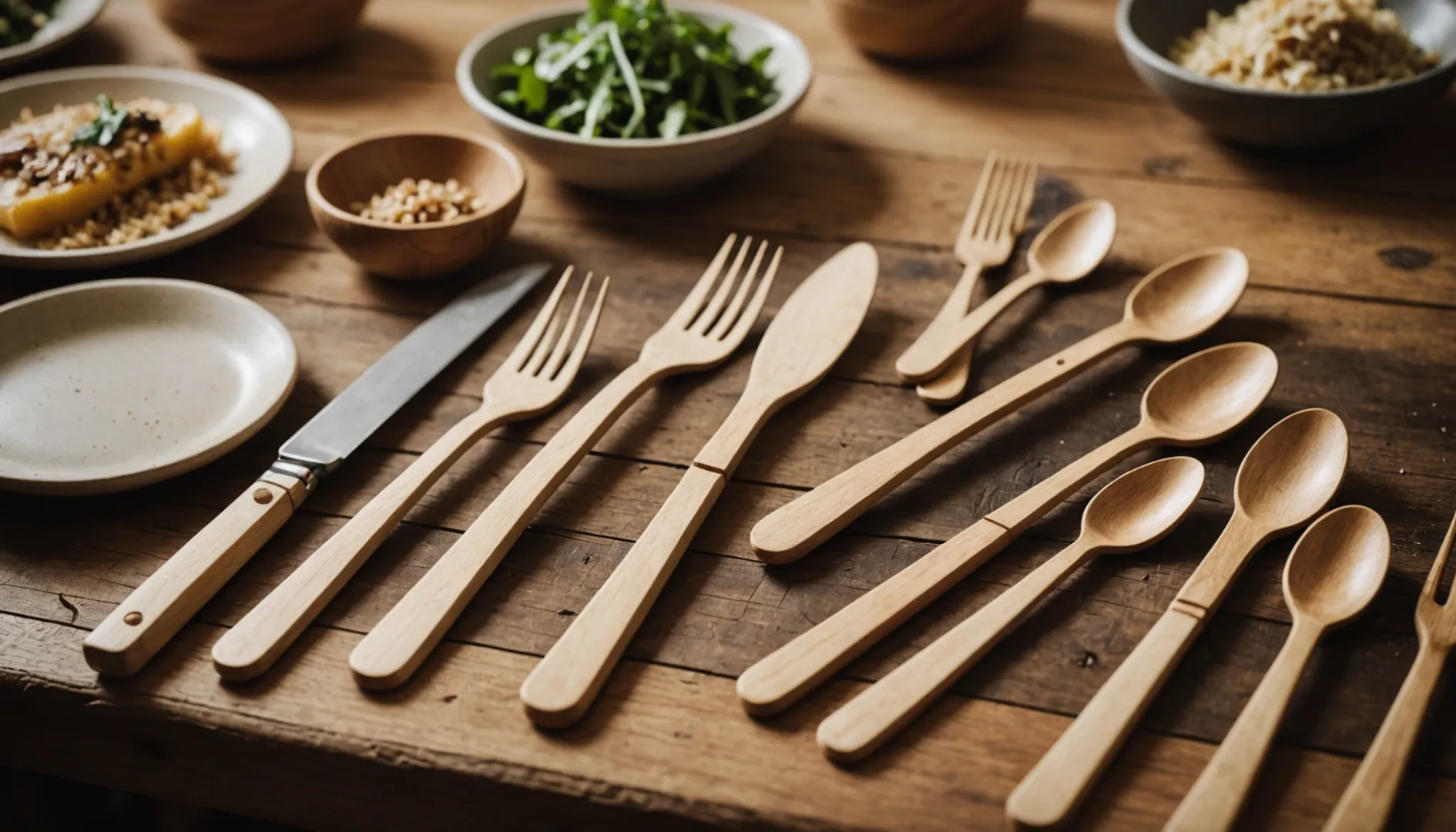
The Role of Coatings in Biodegradability
You know those "eco-friendly" disposable cutlery sets that claim to be biodegradable? I once bought a set, feeling pretty good about my environmentally conscious choice. But then, I learned about the coatings used to make them sturdier. These coatings, while great for keeping your fork from snapping in half during a meal, also create a barrier that microorganisms can't easily penetrate. It's like giving microbes a Rubik’s cube to solve before they can start their work. So, while you're finishing your meal, nature might be waiting much longer to finish with your fork.
Additives and Their Impact
Additives are a bit like seasoning in cooking; they can enhance or ruin the final product. Some are added to improve the strength or flexibility of materials, but they can also affect biodegradability. For example, I once read about plasticizers—compounds added to increase flexibility. They're like the yoga instructors of the plastic world but can sometimes be too good at their job. They make it harder for microbes to break down the material because they create a more challenging environment for these tiny recyclers to navigate.
In some biodegradable plastics5, though, additives do more good than harm. By incorporating things like starches, manufacturers help create an inviting feast for microbes, making it easier for them to do their work and decompose the material effectively.
Examining Material Composition
Understanding the overall composition of materials is crucial. It's like checking the ingredients on a food label. You want to make sure everything in there aligns with what you expect—especially if you're aiming for sustainability. Products certified for composting have been thoroughly tested to ensure that all components, including those pesky coatings and additives, break down in a specific timeframe under certain conditions. Certification bodies like BPI®6 help guide this process.
The journey to sustainable materials involves understanding how various factors like environmental conditions and chemical compositions impact biodegradability. As I dive deeper into this subject, exploring certification standards7 offers insights into creating products that not only serve their purpose but also minimize environmental impact after they're used.
Birch wood cutlery is always biodegradable.False
Birch wood is generally biodegradable, but treatments may affect this.
Commercial composting is faster than home composting.True
Commercial composting provides optimal conditions for faster biodegradation.
What’s the Difference Between Home and Commercial Composting?
Ever wondered how tossing a banana peel in your backyard differs from industrial composting? Let me walk you through it.
Home composting is a personal, small-scale approach using kitchen scraps, while commercial composting is a large-scale operation utilizing specialized equipment for efficient processing of diverse organic materials.
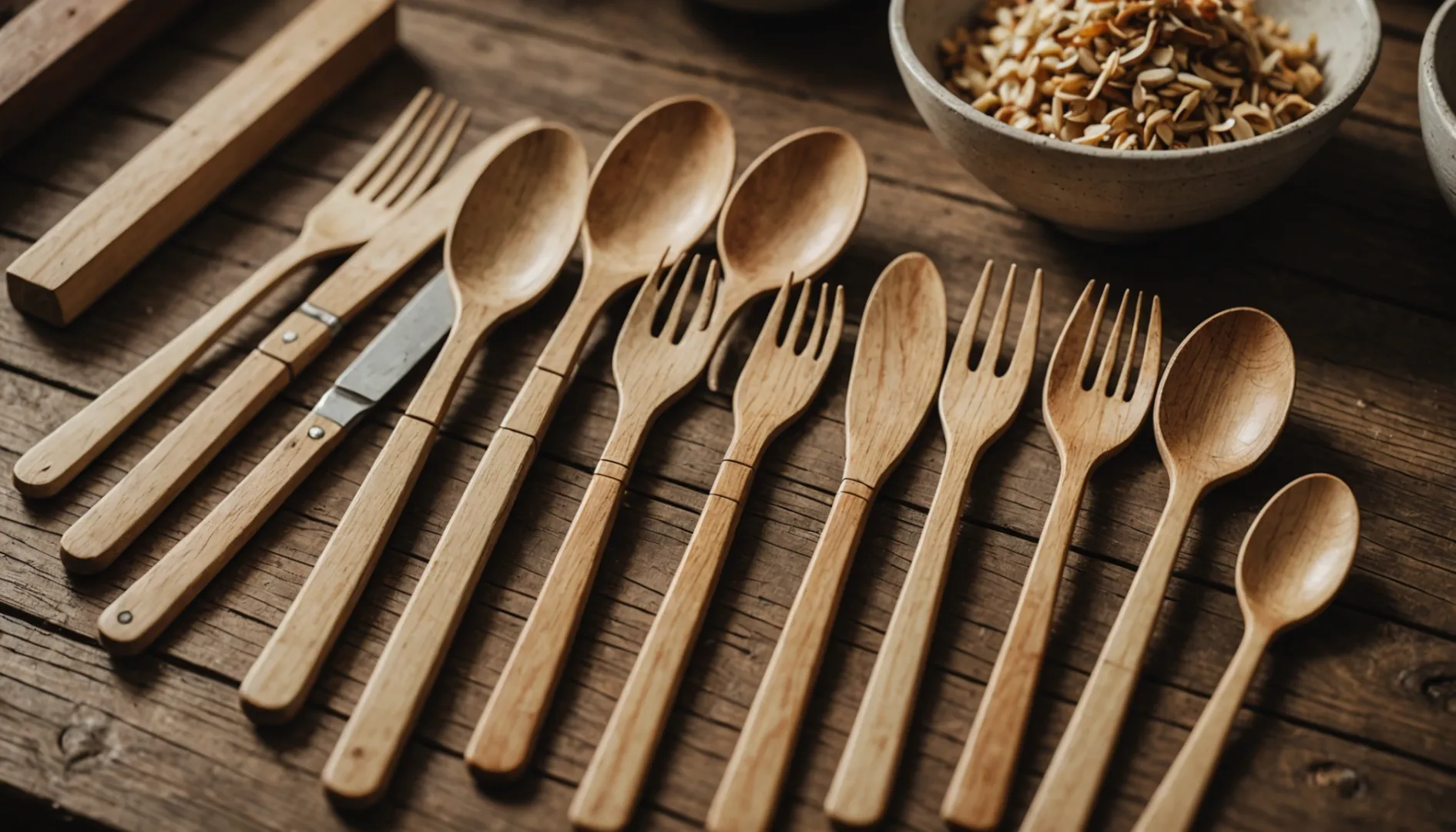
Scale and Setup
I remember the first time I decided to start composting at home. Armed with a basic compost bin and a bunch of kitchen scraps, I thought I was ready to save the planet from my backyard. Home composting is usually just like that—small-scale, using household waste like vegetable peels and coffee grounds. It's simple and often involves little more than a bin or a pile.
In contrast, commercial composting feels like a different universe. These operations manage mountains of organic waste sourced from places like restaurants and municipalities. Imagine towering piles of waste being processed with heavy machinery, turning it into rich compost in a fraction of the time my humble bin takes.
Materials Accepted
When I tried composting some leftover pizza, let's just say the results weren't great. Home composting generally handles simple kitchen scraps and garden waste best. Things like meat or certain types of paper can be problematic.
On the flip side, commercial facilities are built to handle a much broader array of materials. They can break down complex materials, including biodegradable plastics and even meat and bones. Their ability to maintain higher temperatures makes all the difference. For instance, commercial facilities8 can process items that would just rot and attract pests in my backyard setup.
Process Efficiency
In my experience, home composting relies heavily on nature’s whims. It's all about local conditions—if it rains too much or if it's too dry, the process slows down. Sometimes, it feels like watching grass grow.
Commercial composting, on the other hand, is all about control and efficiency. They create perfect conditions for microbes to work their magic, leading to faster and more predictable results. It's like having a turbo-charged version of what happens in my little compost bin.
Environmental Impact
When I first started composting, I loved the idea that I was cutting down on landfill waste right from my home. It felt empowering to recycle my organic waste locally. However, commercial composting also offers significant environmental benefits by managing waste on a larger scale.
Commercial facilities might require transporting waste to centralized locations, but they also consolidate efforts and can offer economies of scale. Exploring the benefits of each method9 can help you decide which aligns best with your sustainability goals. Whether it's the intimate feel of home composting or the massive impact of commercial systems, both paths contribute meaningfully to reducing our ecological footprint.
Birch wood cutlery decomposes faster than bamboo.False
Decomposition rates depend on treatment and conditions, not just wood type.
Commercial composting requires specific conditions for wooden cutlery.True
Commercial composting often needs precise conditions for effective biodegradation.
What Certifications Should You Look For in Biodegradable Products?
Ever felt overwhelmed by the avalanche of biodegradable products claiming to save the planet?
When evaluating biodegradable products, look for certifications like ASTM D6400, EN 13432, and BPI. These ensure the products are genuinely compostable, helping you make eco-friendly choices confidently.
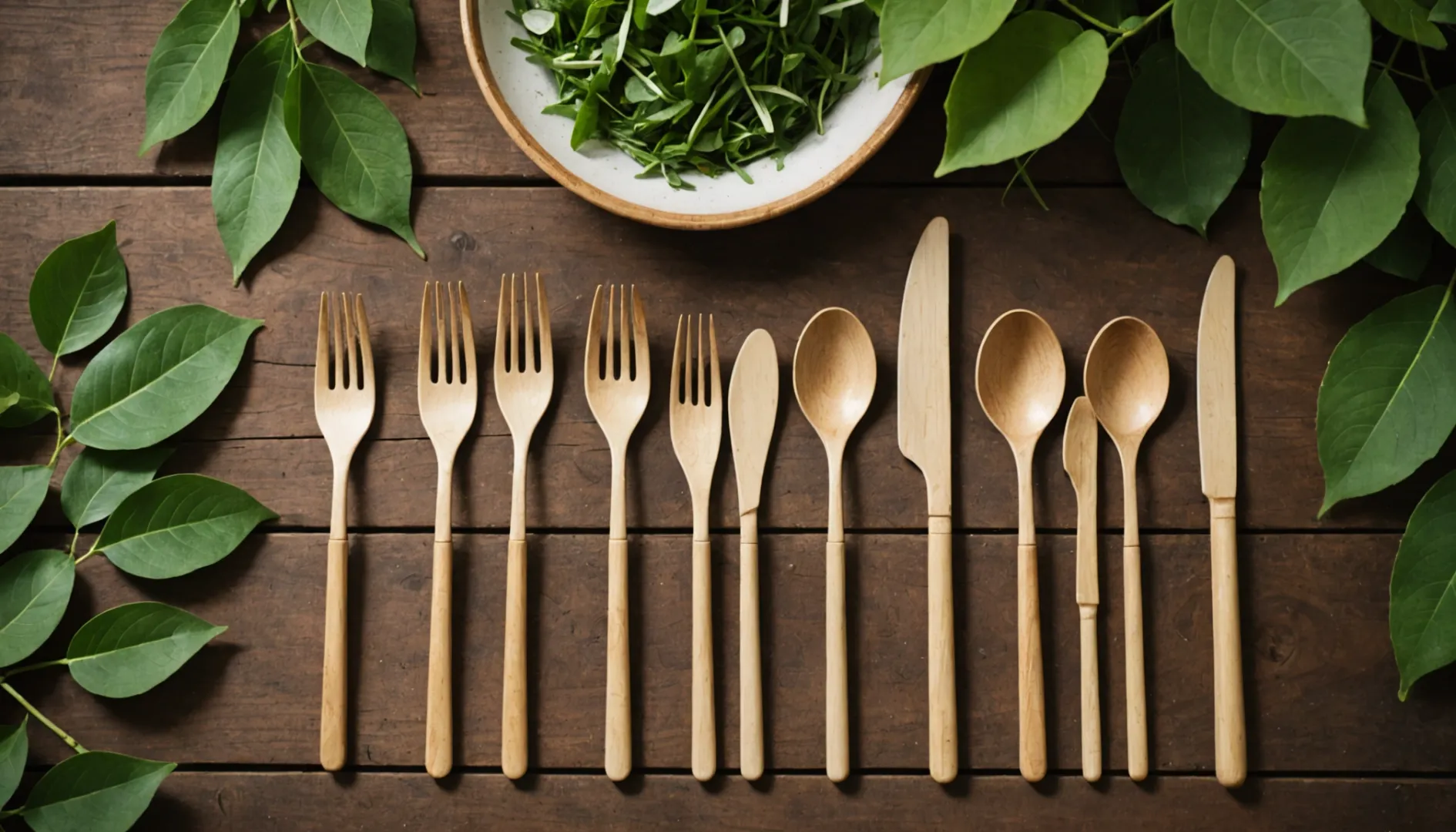
I remember the first time I tried to navigate the world of biodegradable products. It felt like I was diving into an ocean without a life jacket, surrounded by labels that promised to be eco-friendly without any clear proof. Thankfully, I discovered a few key certifications that can help guide anyone through this maze.
Understanding Key Certifications
When searching for biodegradable products, it's essential to recognize key certifications that indicate genuine eco-friendliness10. Imagine this: you're holding two products, both claiming to be biodegradable. How do you know which one is the real deal? This is where certifications like ASTM D6400 and EN 13432 come into play. These standards certify that products will decompose in commercial composting facilities under specific conditions. They are not just numbers—they're your assurance that what you're buying will break down under commercial composting conditions, leaving nothing harmful behind.
The Biodegradable Products Institute (BPI) logo is another sign of trust. Whenever I spot it, I breathe a sigh of relief because it means that product will decompose completely in a commercial compost setting without leaving harmful residues. And for those of us who try our hand at home composting, look for the OK Compost HOME certification. It's like having a stamp of approval for your backyard efforts.
Why Certifications Matter
I've been fooled before by greenwashing11—products that look eco-friendly but don’t live up to their claims. Certifications such as these not only guarantee product performance but also reduce greenwashing—the practice of marketing products as environmentally friendly without substantial proof. By choosing certified products, consumers can support brands committed to sustainability and environmental responsibility.
These certifications don't come easy. Products must undergo rigorous testing and verification by third-party organizations, ensuring transparency and accountability. It’s like having a trusted friend who gives you honest advice.
Finding Certified Products
Shopping for biodegradable items can feel like a treasure hunt. When shopping, look for certification marks on packaging or product descriptions online makes it much easier to spot the genuine articles. Many retailers highlight these credentials in their product listings, making it easier to identify genuine biodegradable items. Additionally, some websites offer databases of certified products—streamlining the selection process12 for consumers.
Arming myself with knowledge about what each certification means has been empowering. Educating yourself on what each certification entails can also help you distinguish between various biodegradable options. It’s like learning a new language that helps me make choices aligned with my values and environmental goals. So next time you’re out shopping, remember: those little certification marks carry big weight in making our world a better place.
All wooden cutlery is biodegradable.False
Wooden cutlery biodegradability varies by wood type and treatments.
BPI certification ensures compostability standards.True
BPI certification confirms products meet compostability standards.
Conclusion
Not all disposable wooden cutlery is biodegradable; factors like wood type, coatings, and disposal methods affect decomposition. Certifications help consumers choose genuinely eco-friendly options.
-
Learn why birch wood is ideal for everyday cutlery. ↩
-
Understand how bamboo's processing affects biodegradability. ↩
-
Explore eco-friendly disposal methods for maple cutlery. ↩
-
Discover unique features of cherry and walnut used in cutlery. ↩
-
Discover how specific additives influence biodegradable plastic breakdown. ↩
-
Learn about standards ensuring products are truly compostable. ↩
-
Understand criteria used to assess biodegradability of materials. ↩
-
Discover the wide range of materials handled by commercial composting. ↩
-
Learn about the environmental benefits and efficiencies of each method. ↩
-
Learn how eco-certifications validate environmental claims effectively. ↩
-
Understand how greenwashing misleads buyers about product sustainability. ↩
-
Discover platforms listing verified biodegradable items easily. ↩

